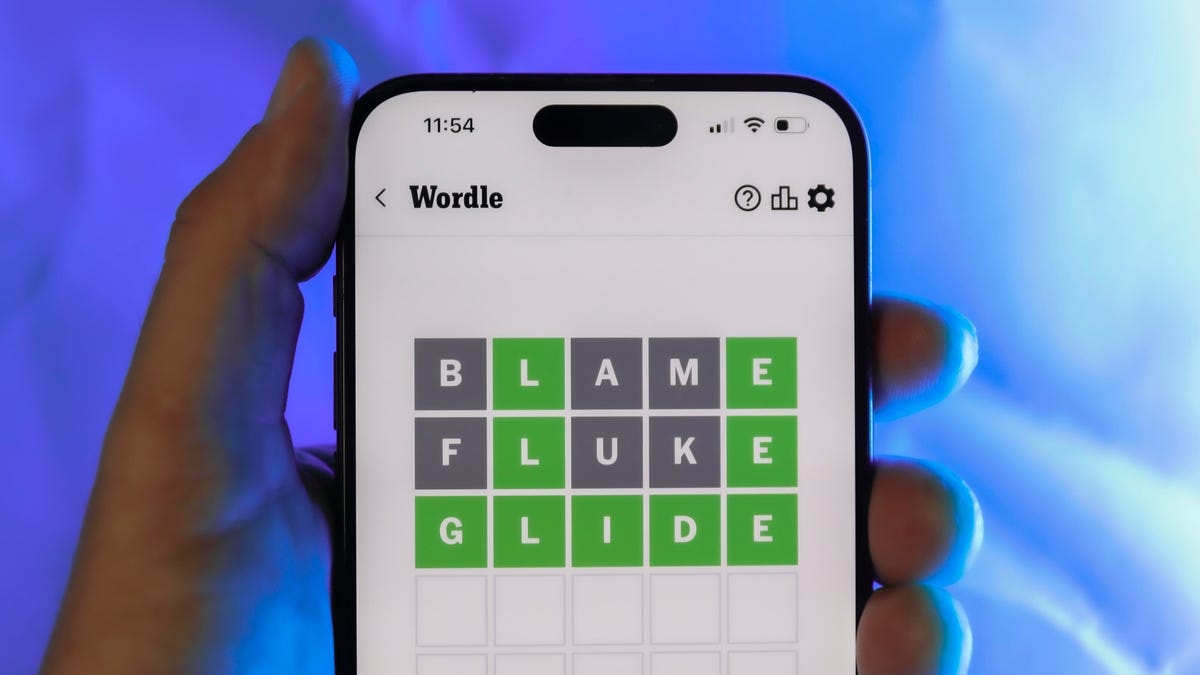Technologies
Cryptocurrency pump-and-dump schemes: Everything you should know about these scams
Don’t be the victim of a rug pull.

Cryptocurrency fans view Bitcoin, Ethereum and Dogecoin as the future of money for the globe. The underlying blockchain technology allows crypto to work by creating a digital ledger that records transactions, which would seemingly create a safer form of currency. But where there’s money to be made, scammers aren’t far behind.
Crypto pump-and-dump schemes are designed to take advantage of people while making some big money for scammers. They generally involve influencers who receive financial incentives for telling people to buy a certain digital coin in order to raise its value. Once the value goes up, the scammers and influencers sell their coins and pocket the profits, while everyone else sees their investments lose value.
These schemes mark the latest twist in the ever-changing story of cryptocurrencies, which have created some millionaires while bankrupting others through their persistent volatility. Even Dogecoin, a cryptocurrency created as a joke, garnered mainstream attention thanks to high-profile figures such as Tesla CEO Elon Musk, who said at last week’s B conference that he «pumps, but doesn’t dump.»
He’s not the only one.
Earlier this month, popular esports organization FaZe Clan suspended multiple members who participated in a crypto pump-and-dump disguised as a charity drive while taking home tens of thousands of dollars.
With cryptocurrencies becoming easier to develop, scammers are taking advantage of people who have developed FOMO, or «fear of missing out,» and are looking to jump on new crypto coins in hopes of getting rich.
Here’s what you need to know about crypto pump-and-dumps.
What is a pump-and-dump scam?
A pump and dump is a securities scam usually involving stocks. Scammers create false hype about a stock in order to generate interest. Once investors start buying shares, the price of the stock goes up. When the price reaches a certain point, the scammers behind the fake hype sell all of their shares. This causes the stock price to plummet, which leaves new investors holding the bag.
The movie The Wolf of Wall Street portrayed the infamous pump-and-dump scam conducted by Stratton Oakmont investment firm in the ’90s.
How does this scam work with cryptocurrency?
It doesn’t work much differently than with stocks. A certain crypto asset is pumped up by people in order to make the value increase.
«As the prices rise, the pump creators dump their assets into the FOMO they’ve generated, resulting in a price crash that leaves the new buyers holding a bag of the assets that now have a lower value than they were purchased at, creating significant and often unrecoverable losses,» said Douglas Horn, chief architect of Telos Core Developers.
What’s different is what’s used for the pump-and-dump. Bitcoin, Etherereum and Dogecoin are well-established cryptocurrencies, and it takes someone with the following of Musk to increase or decrease their value. However, since creating a whole blockchain system for a currency takes a lot of time and effort, those knowledgeable about coding can create their own crypto tokens, which are digital assets using an already existing blockchain like Bitcoin or Ethereum.
These tokens, also referred to as coins, can be created easily like Shiba Inu, which the developers have referred to as a «Dogecoin killer» in a tongue-in-cheek manner. Developers can also create billions of these coins, which in turn means they go for fractions of a penny. One Shiba Inu token, for example, costs $0.0000065, so you can buy 100,000 tokens for less than $1.
Since someone can create billions of tokens easily that cost hardly anything, all that’s needed is to convince enough people to buy these super cheap coins. This can be done through Discord channels, forums or social media, or by getting an influencer to promote the coin in exchange for their own trove of coins.
If the scammers have 1 billion tokens worth $0.000001 then that’s only worth $1,000. But if they can increase the value of a token by just one decimal point, their stash of coins is now worth $10,000. If they dump it quickly, that’ll cause its value to crash.
Another small difference with the crypto pump-and-dump is the term. While it’s known as a pump-and-dump, in crypto circles the scam is referred to as a «rug pull,» as in the rug was pulled right out from under the investors. Part of enticing people to buy these super cheap tokens is to say they’re «rug-proof,» which means there are measures in place to prevent people who have a large number of coins from selling them within a certain time period.
What are some examples of cryptocurrency pump-and-dumps?
In July, four members of the FaZe Clan participated in a pump-and-dump for a token called SaveTheChildren. The pro gamers, along with other influencers, pushed the coin to their followers. Once the price increased, they began selling off the tokens they were given to be part of the scam, with some making an estimated $30,000.
Another coin called SafeTrade was sold as «rug-proof» earlier this year. Once people started buying, the organizers sold their coins and left everyone else in the dust.
A 2020 study from the University of Technology Sydney and the Stockholm School of Economics in Riga found 355 instances of crypto pump-and-dump scams over the course of seven months. The organizers of these scams made millions.
Are pump-and-dump scams illegal?
For stocks, yes. For cryptocurrency, no.
The Securities and Exchange Commission is the government regulatory agency that investigates securities scams such as insider trading and pump and dumps. It doesn’t yet have similar rules for cryptocurrency, and doesn’t plan on implementing crypto regulations, at least for 2021.
How do you avoid crypto pump-and-dumps?
It’s important to understand if FOMO is contributing to your decision on whether to invest in a cryptocurrency. It may seem like everyone is getting rich off of Bitcoin or Dogecoin, but that’s not the case.
The next is to do your homework. Crypto coins or tokens can be created fairly easily by people who understand coding. If there’s a new coin that’s supposedly going to make you rich, do some web searches to learn more. The initial coin offering, or ICO, will have a «white paper» that offers details about the coin, who’s behind it, what their objective is and so on.
Then there’s a matter of the buzz that’s being generated. A way scammers get the word out about their coin is going into spaces where people are interested in cryptocurrency, such as Discord channels, social media and forums. If all of a sudden some person starts hyping up a brand new token, there’s a good chance they’re pushing a scam.
Be wary of any influencer who you may follow who hardly mentions cryptocurrency and randomly begins promoting a token. In the case of the FaZe Clan members, they promoted coins with a social media campaign and gave out thousands of free coins to their followers, which in turn entices other followers to buy coins — FOMO strikes again. If you’re going to take financial advice, get it from a professional and not someone whose claim to fame is being good at a video game.
Last, if you’re still interested in investing, then don’t invest more than you’re willing to lose. It’s possible that with the right timing, an investor could make money off a pump-and-dump, but it’s better to assume that the money you’re using to buy tokens will be gone forever.
Technologies
Today’s Wordle Hints, Answer and Help for Nov. 4, #1599
Here are hints and the answer for today’s Wordle for Nov. 4, No. 1,599.

Looking for the most recent Wordle answer? Click here for today’s Wordle hints, as well as our daily answers and hints for The New York Times Mini Crossword, Connections, Connections: Sports Edition and Strands puzzles.
Today’s Wordle puzzle begins with one of the least-used letters in the alphabet. (Check our full list ranking the letters by popularity.) If you need a new starter word, check out our list of which letters show up the most in English words. If you need hints and the answer, read on.
Today’s Wordle hints
Before we show you today’s Wordle answer, we’ll give you some hints. If you don’t want a spoiler, look away now.
Wordle hint No. 1: Repeats
Today’s Wordle answer has one repeated letter.
Wordle hint No. 2: Vowels
Today’s Wordle answer has two vowels, but one is the repeated letter, so you’ll see that one twice.
Wordle hint No. 3: First letter
Today’s Wordle answer begins with V.
Wordle hint No. 4: Last letter
Today’s Wordle answer ends with E.
Wordle hint No. 5: Meaning
Today’s Wordle answer can refer to the place where something happens, especially an organized event such as a concert, conference, or sports event.
TODAY’S WORDLE ANSWER
Today’s Wordle answer is VENUE.
Yesterday’s Wordle answer
Yesterday’s Wordle answer, Nov. 3, No. 1598 was AWOKE.
Recent Wordle answers
Oct. 30, No. 1594: LATHE
Oct. 31, No. 1595: ABHOR
Nov. 1, No. 1596: MOTEL
Nov. 2, No. 1597: RABID
Technologies
Why You Should Consider a Burner Phone for Your Holiday Travel This Year
If you’re traveling internationally, carrying a simple phone that doesn’t store personal information can be a smart move when entering the US.

Travel is challenging enough, and this year adds a new hurdle. US border agents are stepping up searches of travelers entering the country — even US citizens returning from overseas — and that extends to their personal devices. These searches can go beyond a quick look, giving agents the authority to copy or analyze a phone’s contents.
According to new figures from US Customs and Border Protection, nearly 15,000 device searches were carried out between April and June, with over 1,000 of them using advanced tools that copy or analyze what’s on a phone. The rising numbers raise questions about how much personal data travelers may be handing over without realizing it.
So what’s the solution? A burner phone. It’s the ultimate defense for keeping your personal data private when you travel, ensuring you stay connected without handing over your entire digital life at the border.
But the appeal goes beyond privacy. A stripped-down phone is also the perfect escape from the constant notifications and screen-time vortex of your primary device. Even celebrities such as Conan O’Brien have embraced simpler phones to cut through the noise. Whether you’re crossing a border or just trying to cross the street without distractions, a burner might be the smartest tech you own.
Read more: Best Prepaid Phone of 2025
Although carriers have offered prepaid phones since the ’90s, «burner phones» or «burners» became popular in the 2000s following the celebrated HBO series The Wire, where they helped characters avoid getting caught by the police. Although often portrayed in that light, burners aren’t only used by criminals; they’re also used anyone concerned with surveillance or privacy infringement.
What is a burner phone, and how does it work? Here’s everything you need to know about burners and how to get one.
Don’t miss any of our unbiased tech content and lab-based reviews. Add CNET as a preferred Google source.
What is a burner phone?
A burner phone is a cheap prepaid phone with no commitments. It comes with a set number of prepaid call minutes, text messages or data, and it’s designed to be disposed of after use.
Burners are contract-free, and you can grab them off the counter. They’re called burner phones because you can «burn» them (trash them) after use, and the phone can’t be traced back to you, which makes them appealing to criminals. Burner phones are typically used when you need a phone quickly, without intentions of long-term use.
Burners are different from getting a regular, contract-bound cellphone plan that requires your information to be on file.
Why should you use a burner phone?
Burner phones are an easy way to avoid cellphone contracts or spam that you get on your primary phone number. Burners aren’t linked to your identity, so you can avoid being tracked down or contacted.
You don’t have to dispose of a burner phone after use. You can add more minutes and continue using it. Burner phones can still function as regular phones, minus the hassle of a contract.
You can also get a burner phone as a secondary phone for a specific purpose, like having a spare phone number for two-factor authentication texts, for business, or to avoid roaming charges while traveling. Burner phones are often used by anyone concerned with privacy.
Read more: The Data Privacy Tips Digital Security Experts Wish You Knew
Burner phones, prepaid phones, smartphones and burner SIMs: What’s the difference?
Burner phones are cheap phones with simple designs that lack the bells and whistles of a smartphone. Because they’re designed to be disposable, you only get the essentials, as seen by the most common version, the flip phone.
All burner phones are prepaid phones, but not all prepaid phones are burners. What sets a burner apart is that you won’t have to give away any personal information to get one, and it won’t be traceable back to you. Again, a burner phone is cheap enough to be destroyed after use.
Prepaid smartphones are generally low-end models. You can use any unlocked smartphone with prepaid SIM cards, essentially making it a prepaid phone.
If you want a burner, you don’t necessarily have to buy a new phone. You can get a burner SIM and use it with an existing phone. Burner SIMs are prepaid SIMs you can get without a contract or giving away personal information.
Where can you buy a burner phone?
Burner phones are available at all major retail outlets, including Best Buy, Target and Walmart. They’re also often available at convenience stores like 7-Eleven, local supermarkets, gas stations and retail phone outlets like Cricket and Metro.
You can get a burner phone with cash, and it should cost between $10 and $50, although it may cost more if you get more minutes and data. If you’re getting a burner phone specifically to avoid having the phone traced back to you, it makes sense to pay with cash instead of a credit card.
If you just want a prepaid secondary phone, you can use a credit card. Just keep in mind that credit cards leave a trail that leads back to you.
There are also many apps that let you get secondary phone numbers, including Google Fi and the Burner app. However, these aren’t burners necessarily because the providers typically have at least some of your personal information.
If you’re just looking to get a solid prepaid phone without anonymity, check out our full guide for the best prepaid phone plans available. We also have a guide for the best cheap phone plans.
Technologies
Chrome Autofill Now Supports Passport, Driver’s License and Vehicle Info
Soon, you’ll never need to remember anything ever again.

Computer users are accustomed to web browsers autofilling everything from names and addresses to credit card numbers. Now, Google Chrome is adding new enhanced autofill options that allow users to automatically populate fields for passports, driver’s licenses, and their vehicle’s license plate or VIN, Google said in a blog post on Monday.
Desktop users must choose to turn on the feature, which is called enhanced autofill. Otherwise, it stays off. To turn it on, open Chrome, and at the top right of your browser, select more, then settings, then autofill and passwords. Finally, choose enhanced autofill and turn it in.
Google says Chrome now can «better understand complex forms and varied formatting requirements, improving accuracy across the web.» The company also says that enhanced autofill will be «private and secure.»
This enhanced autofill update is available in all languages, and more data options will be supported in the coming months.
A representative for Google said the company had no additional comment.
Don’t miss any of our unbiased tech content and lab-based reviews. Add CNET as a preferred Google source.
Chrome is a critical component in Google’s business. The web browser, currently the most popular in the world with a 73% market share, according to GlobalStats, provides the company with valuable user data that it uses to sell advertising. Advertising is how Google makes the majority of its revenues. New features help keep users loyal to Chrome, making it more difficult for them to switch to other browsers, including those from companies like Perplexity and OpenAI.
-

 Technologies3 года ago
Technologies3 года agoTech Companies Need to Be Held Accountable for Security, Experts Say
-

 Technologies3 года ago
Technologies3 года agoBest Handheld Game Console in 2023
-

 Technologies3 года ago
Technologies3 года agoTighten Up Your VR Game With the Best Head Straps for Quest 2
-

 Technologies4 года ago
Technologies4 года agoVerum, Wickr and Threema: next generation secured messengers
-

 Technologies4 года ago
Technologies4 года agoBlack Friday 2021: The best deals on TVs, headphones, kitchenware, and more
-

 Technologies4 года ago
Technologies4 года agoGoogle to require vaccinations as Silicon Valley rethinks return-to-office policies
-

 Technologies4 года ago
Technologies4 года agoOlivia Harlan Dekker for Verum Messenger
-

 Technologies4 года ago
Technologies4 года agoiPhone 13 event: How to watch Apple’s big announcement tomorrow
